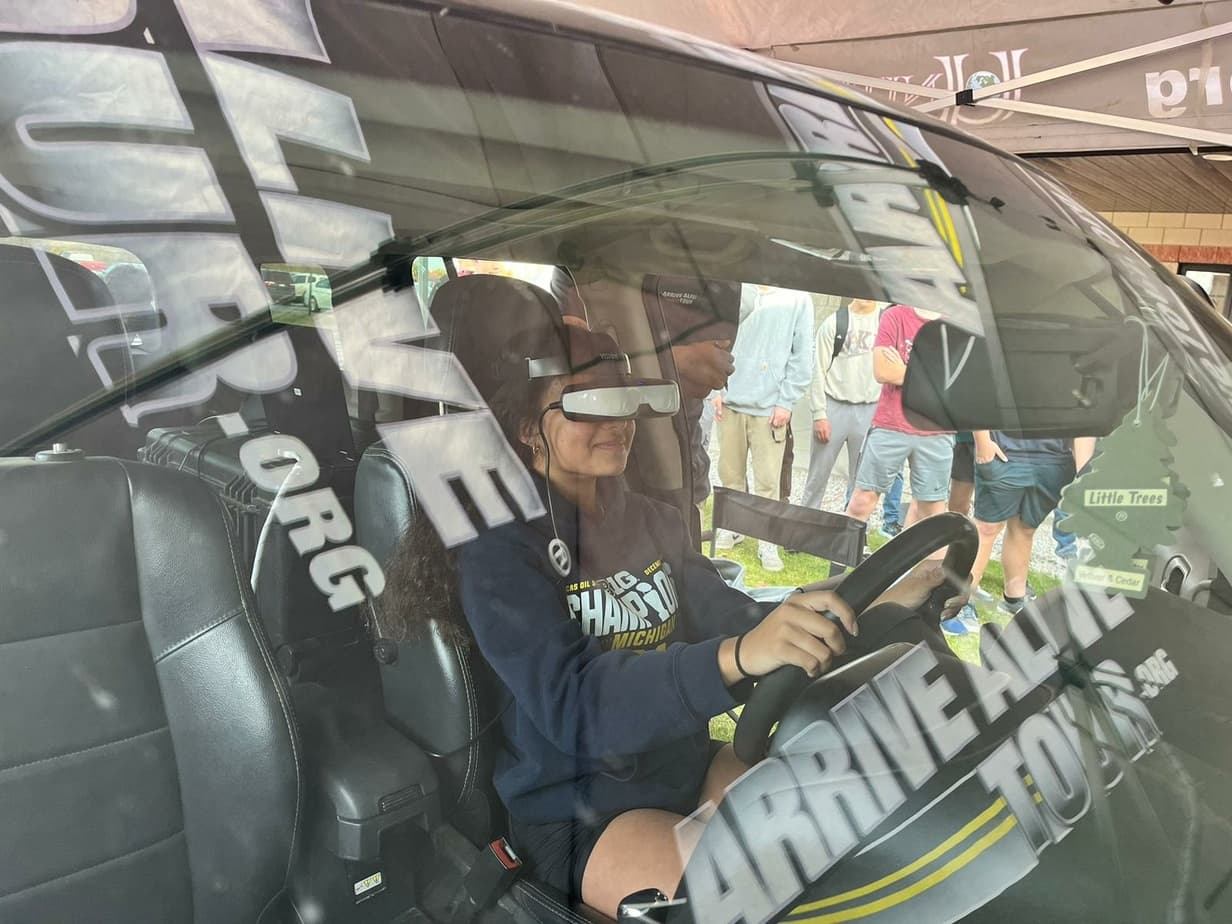Virtual Reality Program Brings Real Consequences to Kingsley Students
The Arrive Alive Tour visited Kingsley High School on November 7, providing students with a hands on virtual reality simulation that reproduced the slowed reaction times and impaired motor control of drunk, drug impaired, and distracted driving. The interactive session included mock citations and measurable before and after surveys, making it a focal part of Red Ribbon Week and a new tool for local prevention efforts.

On November 7 the Arrive Alive Tour set up at Kingsley High School to give students an immersive demonstration of the risks and downstream consequences of impaired and distracted driving. The program paired a virtual reality headset with a disabled vehicle and sensors to create realistic driving simulations that displayed slowed reaction times and impaired motor control in a controlled environment. Facilitators issued mock citations for traffic law violations that occurred in the simulation so students could see the possible legal and insurance impacts of reckless choices behind the wheel.
Teachers and students reported that the VR experience left a stronger impression than traditional lecture based programs. School staff said the tool has already become a key part of Red Ribbon Week activities and local prevention initiatives, providing an experiential complement to classroom lessons and warning campaigns. The Arrive Alive Tour also measured changes in participant knowledge and attitudes by administering before and after surveys to students, establishing an evidentiary basis to assess immediate learning gains.
The local implications extend beyond individual awareness. Experiential programs that demonstrate how impaired or distracted driving translates into citations and legal consequences help bridge the gap between abstract warnings and tangible outcomes. For Grand Traverse County parents, educators, and policymakers the event signals a shift toward prevention strategies that emphasize real world simulation and accountability. Embedding the program into school safety weeks increases the likelihood that students will internalize safer driving norms before acquiring full driving privileges.
From a public finance perspective, prevention that reduces risky driving behavior has potential to lower downstream costs related to emergency response, medical treatment, and insurance claims. While the immediate effects measured by the Arrive Alive before and after surveys speak to knowledge and attitude changes, long term municipal benefits depend on sustained behavior change. That makes follow up and longitudinal tracking important for evaluating whether immersive instruction reduces traffic incidents among local youth and whether investment in these programs yields measurable savings for families and public services.
Policy choices at the district and county level will determine whether this visits becomes a recurring element of school safety programming. Partnerships between schools, public health officials, and local law enforcement could help scale the simulation and track outcomes such as citation rates and crash statistics over time. For residents of Grand Traverse County the Arrive Alive Tour offered a vivid reminder that prevention can be both educational and practical, and that tools which demonstrate real consequences may change how young drivers approach the road.


